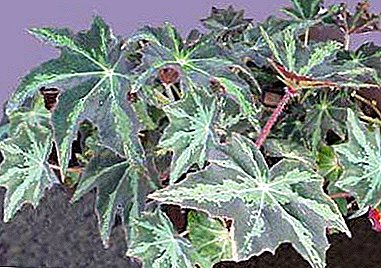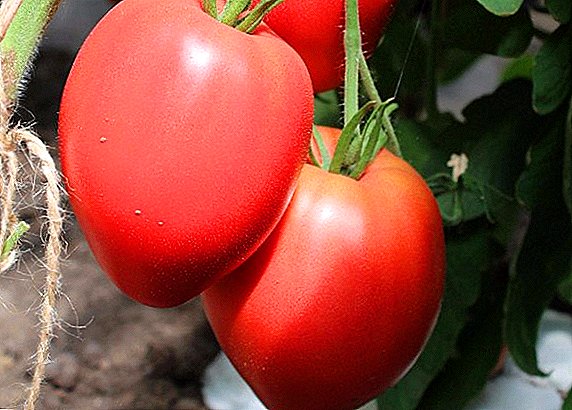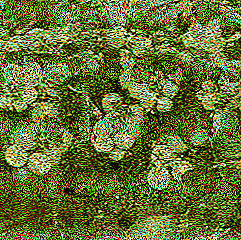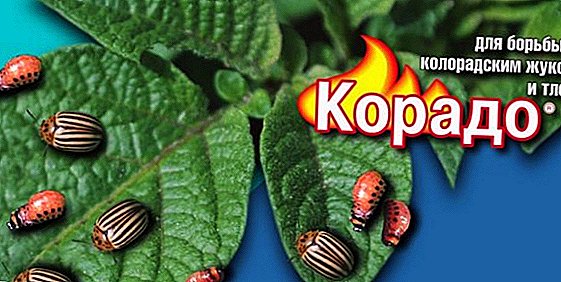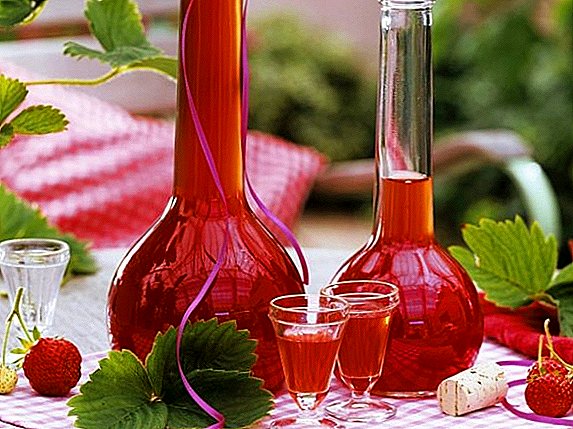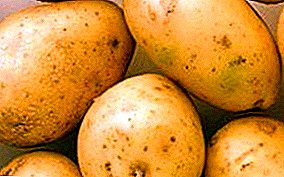 High yield depends on good fertilizer. But not always dry dressings can be useful. Then the fertilizer "Akvarin" comes to the rescue. It is water soluble and easy to use.
High yield depends on good fertilizer. But not always dry dressings can be useful. Then the fertilizer "Akvarin" comes to the rescue. It is water soluble and easy to use.
Here you will learn a brief description of the Akvarin product, advantages over other fertilizers, as well as instructions for use for different crops.
a brief description of
Means "Akvarin" is considered a complex mineral additive, which belongs to the NPK-groups. In the feeding, there are no salts that can lead to dehydration of the plant. Water-soluble additive is well absorbed by the culture without salt burdening.
Advantages of "Akvarin"
Additive "Akvarin" has many advantages, which he conquers gardeners. For example, it is not toxic, since the composition does not contain harmful impurities.
Also, the tool supplements the plant with the substances and trace elements it needs, especially at the time of violent growth. Top dressing prevents the development of diseases that are caused by a lack of nutrients, and also increases the resistance of the culture to any weather phenomena and parasites. "Akvarin" enhances the action of soil supplements and helps the main trace elements from the soil to the plant through the roots. And most importantly, this additive economically solves the problem of plant nutrition.
"Akvarin" enhances the action of soil supplements and helps the main trace elements from the soil to the plant through the roots. And most importantly, this additive economically solves the problem of plant nutrition.
Did you know? Broccoli is considered the most unloved vegetable in the world.
Types and composition of fertilizer "Akvarin"
The composition of "Akvarin" contains nitrogen, sulfur, potassium, magnesium, phosphorus, as well as other mediocre elements. In total, there are 16 types of "Akvarin" on sale. Types of dressings:
- Lawn - 1 kg;
- Coniferous - 1 kg;
- Vegetable - up to 1 kg;
- Potato - 0.1 kg;
- Flower - up to 5 kg;
- Fruit and berry - 1 kg;
- Color - 20 g;
- Fruit - 25 g;
- Strawberry - up to 1 kg.
Instruction: consumption rates and fertilizer application
Now we should talk about the correct dosages and instructions for use.
Lawn
Lawn means can be applied on sports, park and decorative lawns. Top dressing contains micronutrients that affect the color of the grass, herbage and uniform regrowth.
Important! Application of dressings is carried out only by sprinkling.
It is necessary to carry out top dressing after each hairstyle. To do this, take 250 g of the drug per 100 liters of water. The mixture can be processed 10 square meters. m
Coniferous
Coniferous "Akvarin" is a mineral supplement and takes into account the needs of forest and decorative coniferous crops. With it, you can prevent the browning of pine needles and preserve rich greens. Before making 150 g of the substance per 100 liters of water. With this solution you can handle 10 square meters. m
The course of fertilizing - 4 times during the growing season.
Vegetable
Fertilizer "Aquarine" vegetable is a universal substrate for many crops. For beets, celery and carrots, 250g / 100 l of water under the root is planted a month after sowing seeds. The second feeding is carried out during the formation of tubers.
Solanaceous crops can also be fertilized "Aquarian". It is suitable for peppers, eggplants and tomatoes. The first introduction is carried out after the formation of a full-fledged root system. To do this, dilute 250 g / 100 l of water. Also, during the ripening of fruits, it is necessary to fertilize vegetables weekly.
"Akvarin" applies to cucumbers. You need to pour a solution (100 g / 100 l) seedlings after 1.5 weeks, the appearance of the first leaves. Onions and garlic fertilized root method of watering, use a solution of 250 g / 100 l of water. Pumpkin cultures are fertilized in the root way. To do this, dilute 200 g / 100 l of water. Treat the plant for 7 days.
Important! Processing of vegetable culture is carried out in 2-3 weeks after rooting.
Cabbage is fertilized within a week after the seedlings have taken root in the new place. Use the solution (250 g / 100 l of water). You can conduct root or foliar feeding.
Potato
Potato "Akvarin" is introduced by the root method. It can be combined with other means of protection against parasites. This dressing improves the taste and keeping quality of vegetables. For the solution take 300 g / 100 l of water. Just spend 4 spraying:
- as soon as the shoots reached 25 cm;
- two weeks before hilling;
- before flowering;
- after flowering.
Floral
Flower "Akvarin" is suitable for any kind of flowers. It is suitable for home and garden plants. Fertilizer is applied in the form of a solution (100g / 100 l of water).
The first dressing is done during the active development of young shoots. Subsequent spend several times in 30 months during the growing season. Room and balcony plants fertilize every 1.5 weeks. In winter, make 2 times per season. 
Fetus
"Akvarin" The fruit is used by many crops and houseplants. Fertilizer contains sulfur, which helps grow onions, radishes and cabbage. They need to be watered every 14 days with a solution (250 g / 100 l of water).
Peppers, tomatoes, eggplants and houseplants are fertilized every 10 days. Fruit and berry crops are fed once a month with a solution, using 5 liters of solution for each bush or tree.
You can feed plants with nettles, yeast, ash, coal, not to mention the manure and chicken litter.
Strawberry
The Akvarin fertilizer Strawberry is used for garden strawberry as it increases resistance to the weather phenomena, diseases and parasites. Also, the berries are sweeter, and the yield increases significantly.
 The first time we process strawberries by sprinkling after the snow melts. Solution - 250 g of fertilizer per 100 liters of water. The second time is carried out from the beginning of flowering, using a solution of 150 g per 100 l of water. The last dressing is carried out at the end of fruiting in a foliar way. Solution - 150 g per 100 l of water.
The first time we process strawberries by sprinkling after the snow melts. Solution - 250 g of fertilizer per 100 liters of water. The second time is carried out from the beginning of flowering, using a solution of 150 g per 100 l of water. The last dressing is carried out at the end of fruiting in a foliar way. Solution - 150 g per 100 l of water.
Did you know? In ancient Greece, the bow was considered a sacred symbol.
From all of the above, we can conclude that the Akvarin fertilizer is an excellent tool for maintaining good and healthy crop development. Follow our guidelines and grow beautiful plants.


